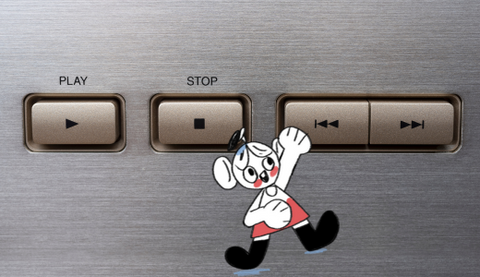
Written by Richard Sullivan
Workshop Facilitator & Agile Coach
Running workshops is a performing art.
It’s not just about preparing material - although that is important of course - but preparing yourself for a good performance.
The mind-body connection in workshop facilitation
Preparing physically, for example.
There’s a connection between mind and body. By priming your body, you also set your mind up for success. You can warm up your voice, practice breathing techniques and think about the physical aspect of your performance. But you can also prepare your body to manage the physical impact of nerves and stress on your ability to perform.
Start your facilitation warm-up the night before your workshop
Opera singers prepare the whole body before they sing, starting with making sure they get a good night’s sleep the night before they perform. Some will go for a short run or jog before a performance to make sure the body is fully warmed up and to benefit from the energising effect of exercise. For them, it’s a whole body performance - and you can see that when you watch them.
If I can, I’ll do that too; something about the physical movement seems to stimulate my brain. You may not be trying to fill an auditorium with the power of your voice, but a warm-up will give you the presence and energy you need for convincing workshop facilitation.
Follow a vocal warm-up routine
How your voice sounds is affected by how you warm-up. If you haven’t spoken for a few hours before leading a workshop, the quality of your voice will be affected. Ideally, start at least an hour before the workshop.
If you are travelling, this is an ideal time to do the warm-up. If you’re in the car no-one can hear you making weird noises. I can usually walk along a busy street doing my warm up without it seeming to bother anyone.
And the weirder the noises now, the better you’ll do later.
Start with getting hydrated. Drink a cup of water at least one hour before you need to use your voice (your instrument) to optimize your vocal cords (also known as vocal folds). When fully hydrated, your vocal folds become more elastic. It’s a cliché, but ‘wet your whistle’.
Hydrated vocal folds allow you to do more with your instrument because they are pliable and more ready to respond. Hydrate, gargle and have more water handy, in a spill proof container, like a squeezable sports drinks bottle. Otherwise, you’ll be certain to knock your cup over when you least want to! Just make sure the bottle is silent when you squeeze it.
Avoid eating or drinking anything with dairy in it (this includes milk chocolate). Dairy prompts the body to produce mucus that coats the throat and can clog your voice. You also want to avoid tea, coffee and alcohol, which will ‘dry’ the throat. Added to the natural tendency for your mouth to be dry as part of a stress reaction, you can find they have robbed your voice of its power; you don’t want to do that.
Coffee and other caffeinated drinks are also best avoided because of the impact of the caffeine on an already stimulated system - if you’re feeling nervous, the jittery effect of a coffee can be very unhelpful.
Vocal resonance and clarity
Next step is to warm up the vocal muscles and attend to your breathing.
There are a few simple things you can put into your pre-performance routine. Try humming a scale of sounds from low to high and back again. Humming is a great go-to for easing in your instrument. When you are humming, be sure that your jaw is loose and your teeth are separated to create more room for resonance.
Then practice saying key phrases out loud to yourself, particularly any tongue twisters you know are coming up. Saying “Wasps build nests in fence posts” makes you focus on your enunciation and clarity. “Fork and knife” is another example.
F, j, p, v and x sounds can be difficult to distinguish. Some sounds can easily be made louder but others cannot. The word ‘click’ for example. It is easy to make the ‘ick’ sound louder but much more difficult to raise the volume of the ‘cl’ sound. This is where you can practise using your breathing to project the sound - instead of shouting it.
Listen to your voice and say the same phrase over and over, trying to make it higher and lower in pitch. I use a nonsense phrase that works the lips and is somehow liberating for me to hear: ‘boogiedaboogiedaboogiehellohellohello.’ Why not?
Performance-enhancing breathing
Focus on how you are breathing. A deep breath, where you fill your lungs by working your diaphragm muscle, gives you more air to work with and so helps your voice sound fuller, deeper and richer - and therefore easier to use as an instrument and more pleasant to listen to.
To raise your awareness and become more conscious of your breathing try this exercise:
Put one palm lightly on your chest and one on your tummy.
Notice which one moves the most as you breathe.
You want your chest to stay still and your tummy to move in and out.
By doing this you are engaging the diaphragm and filling your lungs deeply.
You can also practice exhaling and sounding a note out loud. Try to make the sound last for longer and longer on a single breath.
You can take a tip from Morgan Freeman and try yawning a lot to relax the voice, and ‘yawn-sighs’ that take your voice from the top of its range all the way to a growl in the depths of your lower register. However, only do this exercise a few times as a part of each vocal warm up routine. Never start with this one, and it’s often best to leave it until the end when you have already exercised your voice.
Work that body
Workshop facilitation is a whole-body exercise. Think about relaxing and warming up the body from your head to your toes. Roll out your shoulders to release tension, perform breathing exercises and ensure you attain proper posture to help you prepare.
Physical tension can live anywhere, so if you hold tension in a certain place (be it your neck, in your fingers, clenched toes, etc.), be aware of it and find ways to release it. Add stretching to your morning routine to help you feel loose and comfortable throughout the day.
One simple thing to try is opening your fingers and extending them like a fan to relieve the stress and tension of clenched hands. This version of ‘jazz hands’ is something that airline pilots use to release the tension that we all subconsciously hold in our hands in stressful situations.
Movement is punctuation
Using your arms as part of your delivery is natural. Not doing things like counting on your fingers or making gestures as you speak can adversely affect the flow of what you’re doing.
Give some thought to standing versus sitting - even if you are remote, being on your feet instead of leaning over a desk can have a big impact on your performance.
It can be tempting to ‘rein in’ your movements, but try to resist the temptation. If you gesture, gesture fully. Small, stifled gestures can look awkward and don’t add emphasis.
Warm up the body to manage nerves
Pre-performance routines all help with your nerves and confidence - you are leaving less to chance (control the controllables) and occupying part of your mind with physical activity, which affects mood.
Of course you will still experience some nervousness. It’s expected, even for experienced performers. At one level, nervous energy (adrenaline) is a positive force. It’s only when you slip into over-arousal that it negatively affects your performance. Remember, nervousness and excitement are very similar emotions, so it can help you to reframe your nervous energy as anticipation for the event.
If you have a ‘noisy’ mind in the moment when you’re presenting, it leaves less room in your consciousness for you to hear and respond to what the audience is saying (or not saying).
Nervous performers can make the audience nervous and unsettled. If you’re not confident in giving direction to groups in workshops, it is likely to lead to confusion - and that’s when things can break down.
Some of the things I’ve suggested sound strange, but these simple rituals help you get into a positive performance frame of mind - not to mention the physical benefits.
Like a surgeon washing their hands and scrubbing up before an operation - it’s an important ritual as well as a practical control measure.
‘Boogiedaboogiedaboogiehellohellohello’.
Why not?









